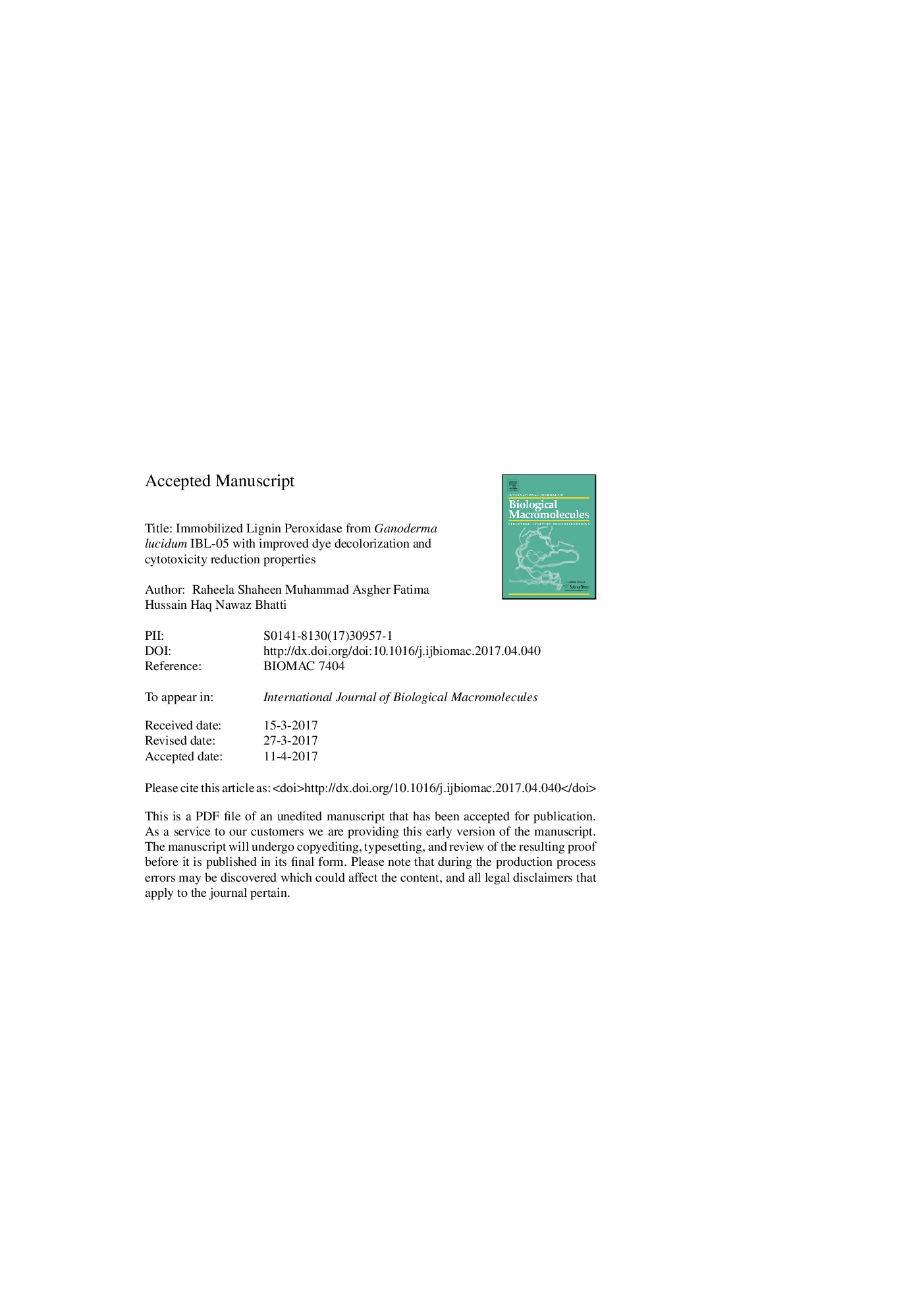| Article ID | Journal | Published Year | Pages | File Type |
|---|---|---|---|---|
| 5511828 | International Journal of Biological Macromolecules | 2017 | 27 Pages |
Abstract
Use of free microbial enzymes for bioremediation and other industrial applications has several disadvantages like low stability and non-reusability in repeated batch operations. Immobilized enzymes are stable, recoverable and reusable in industrial processes. In this scenario G. lucidum IBL-05 LiP was entrapped in Ca-alginate beads using optimum concentrations of Na-alginate (4%), calcium chloride (0.2 M) and glutraldehyde (0.02%). Optimum pH (pH 5) and temperature (55 °C) for entrapped LiP were improved as compared to free LiP. Catalytic behavior of LiP also significantly enhanced, as Km value (0.25 mM) decreased and Vmax value (868.6 μmol/min) increased after ca-alginate entrapment of LiP. Decolorization efficiencies of Sandal reactive dyes after treating with immobilized LiP were in the range of 80-93%. A significant reduction was observed in water quality parameters including, BOD (66.44-98.22%), COD (81.34-98.82%) and TOC (80.21-97.77%) values. The cytotoxicity values for heamolytic and brine shrimp lethality of dye solutions treated with Ca-alginate immobilized LiP reduced up to 2.10-5.06% and 5.43-9.23%, respectively. On the basis of reduced toxicity and cytotoxicity values, it was concluded that Ca-alginate beads entrapped LiP may be an effective biocatalyst for bioremediation of dye based textile industry effluents.
Related Topics
Life Sciences
Biochemistry, Genetics and Molecular Biology
Biochemistry
Authors
Raheela Shaheen, Muhammad Asgher, Fatima Hussain, Haq Nawaz Bhatti,
